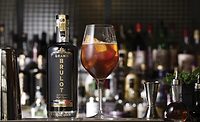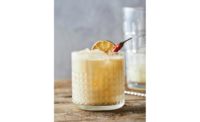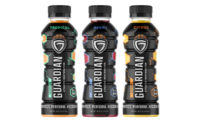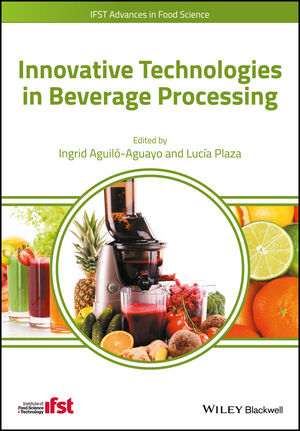R&D Feature
New beverage development combines familiar, novel flavors
Health and wellness elevates better-for-you flavor profiles

With life taking a drastically different turn this past year, beverages have provided consumers with the chance to indulge as some of their other favorite indulgences were stripped away. Yet, conditions keeping health in-focus have kept better-for-you trends in the mix.
Taking account of consumers’ health-and-wellness focus, Catherine Armstrong, vice president of corporate communications at Comax Flavors, Melville, N.Y., says that the flavor supplier has tapped into a bit of innovation.
“[Comax] has created a healthy line of immune-boosting flavors, which include Apple Carrot Ginger, Blueberry Elderberry and Manuka Honey,” Armstrong says.
Philip Caputo, marketing and consumer insights manager for Virginia Dare, Brooklyn N.Y., notes that when it comes to wellness flavors, formulators have a broad palette available and should be emboldened to experiment with innovative combinations and formats.
“By integrating wellness flavors into their applications, beverage brands can underscore their focus on targeted nutrition categories such as immunity, brain health, aging and digestion,” Caputo says.
He notes that functional flavors gaining traction with consumers include dark berries or fruit (e.g., açaì, aronia, bilberry, blackberry, blueberry, elderberry, goji and pomegranate), nutty/fatty profiles inspired by healthy fats (nut oils, avocado and chia), mints for digestion and allergies (such as peppermint), sour flavors associated with fermented drinks or antioxidants (e.g., fruity kombucha, apple cider vinegar, acerola, citrus, cranberry, tart cherry), and earthy flavors from anti-inflammatory and antioxidant powerhouses (e.g., cocoa, ginger, matcha, mushrooms and turmeric).
“Current influential ingredient categories include antioxidant-rich superfoods/berries, super powders, teas, medicinal mushrooms and ingredients with healthy fats,” he says. “Actual product categories driving functional flavors are kombucha and fermented products, protein and greens’ drinks, herbal teas, tonics, elixirs and cold-pressed juices.”
Coralie Garcia-Perrin, global marketing director for sweet taste at Kerry, Beloit, Wis., adds that fermented foods, such as kombucha and “superfood” ingredients including turmeric, cacao and basil continue to grow in popularity.
“Turmeric and ginger have been particularly of interest in the last year in products positioned in improving immunity,” Garcia-Perrin says. “Kerry also has noticed an increase in floral notes such as chamomile and lavender for products positioned for mood management and stress relief.”
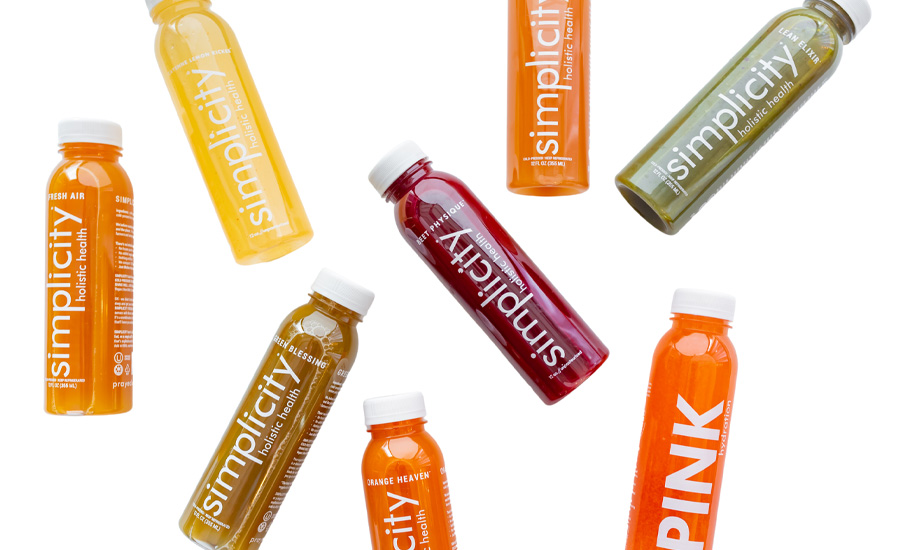
Image courtesy of Simplicity
Sweet innovations
Health and functionality isn’t the only attribute driving beverage innovations. Brands continue to focus efforts on sugar reduction, says Rebecca Shurhay, marketing analyst at Flavorchem, Downers Grove, Ill. In fact, the International Food Information Council (IFIC) 2020 Food and Health Survey found that 74% of respondents are trying to limit or avoid sugar in their diets altogether, she adds.
“The beverage sector leads the way on sugar reduction efforts with a 2.9% sugar decrease in all retail categories, as this movement has translated into other categories of food and drink,” Shurhay says. “For example, energy drink brands are cutting sugar by adding vitamins and are utilizing water in these beverages to appeal to more of a clean-label focus. Juice brands are also addressing consumer concern over sugar content by committing to natural sweeteners and cleaner recipes.”
However, reducing sugar can present challenges for formulators as some natural or zero-calorie sweeteners can result in an off-flavor, Virginia Dare’s Caputo explains.
“The most common issues that natural and zero-calorie sweeteners face are delayed sweetness, lingering sweetness, and a bitter, metallic, licorice, or herbal off-taste,” he says.
Caputo adds that during quarantine, the familiar experience of consumers’ favorite treats has provided a sense of comfort.
“Enjoying one’s favorite flavors in healthy applications can be a nice pick-me-up, a permissible indulgence,” he explains. “While there may be challenges in formulating indulgent foods, flavor modulation also can help overcome undesirable flavors or textures.”
He notes that Virginia Dare’s customized masking flavor systems selectively mask off-tastes, allowing the perception of positive flavor attributes. This often allows a beverage to attain a healthy halo for those seeking better-for-you beverages, as well as an indulgent flavor profile.
K.C. Kuder, marketing communications specialist at Synergy Flavors Inc., Wauconda, Ill., notes that vanilla, chocolate, coffee, bakery and dessert profiles allow consumers to permissibly indulge, with some trending flavors being s’mores and café-inspired profiles such as vanilla latte, mocha and burnt caramel.
“We have especially seen the plant-based beverage sector include more indulgent profiles, adding variety to the standard vanilla and chocolate offerings that this sector has traditionally focused on,” she says.
Kerry’s Garcia-Perrin adds that each global region is turning toward traditional indulgent and dessert-oriented flavors.
“These include flavors such as apple pie, caramel, s’mores in North America; churro marzipan in Latin America; toffee caramel, lemon meringue, tutti-fruity in Europe; and lychee, coconut, green mango in the Asia Pacific Middle East and Africa,” she says.
Back to nature
Another flavor trend to keep an eye on is getting “back to nature,” with experts noting that labels like “all natural” are gaining traction with consumers. Synergy’s Kuder confirms that earthy and natural flavors are trending, following in the footsteps of functionality and feel-good flavors. As such, beverage-makers are opting for profiles that have an associated natural connotation, such as citrus, botanicals, fruits and subtle vegetable profiles such as cucumber.
“Natural ingredients are viewed as better-for-you from a consumer lens, so brands can easily make the same connection with their products when opting for flavors that fit these label claims,” Kuder says.
She adds that “made with natural flavors,” natural extracts and organic-certified flavors continue to be popular in new product development.
“‘Good for me, good for the planet’ and ‘Adopt the Pace of Nature’ are two of Synergy’s Inspiring Trends for 2021-2022,” she says. “These highlight consumers seeking products that benefit the health of the individual, community and the planet.”
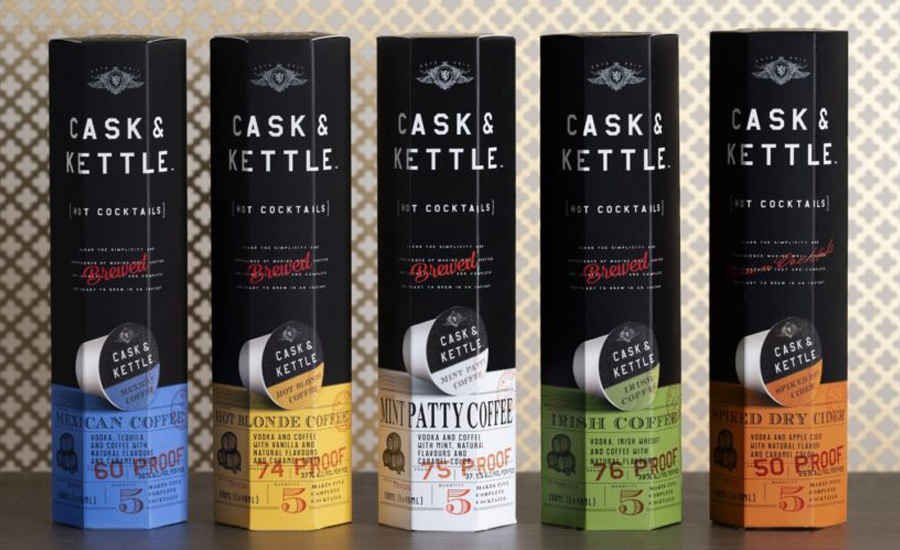
Image courtesy of Cask & Kettle
On the cutting edge
Although traditional flavors are a staple in beverage development, experts note a growing interest in emerging and exotic flavor profiles as consumers get more adventurous.
Virginia Dare’s Caputo notes that botanical extracts such as cayenne, chamomile, cinnamon, eucalyptus, elderflower, green tea, hibiscus, mint and rosemary are emerging across flavor profiles in relaxation and hydration drinks, and beyond.
“Think mashups, hybrids and ingredient swaps for creative functional flavor development inspiration,” he says. “For example, a chia almond butter and elderberry jelly bar, mocha mushroom protein drinks, ACV strawberry basil kombucha gummies, and spiced vanilla turmeric, avocado oat milk latte meal-replacement, etc.”
As mashups help expand portfolios, Synergy’s Kuder notes that sweet-heat flavor combinations also are gaining popularity. For example, spices and herbs being paired with fruit profiles to create a more complex and exciting taste profile.
“These can be seen in flavors such as watermelon-tajin, jalapeño-lime, or black pepper-grapefruit,” she says.
She adds that consumers are seeking globally inspired food and beverage flavors as international travel came to a halt from the pandemic.
“There will always be a need for more traditional flavors, but we are seeing profiles for exotic fruit flavors as well as florals,” she says. “For example, there is an interest in lavender and hibiscus.”
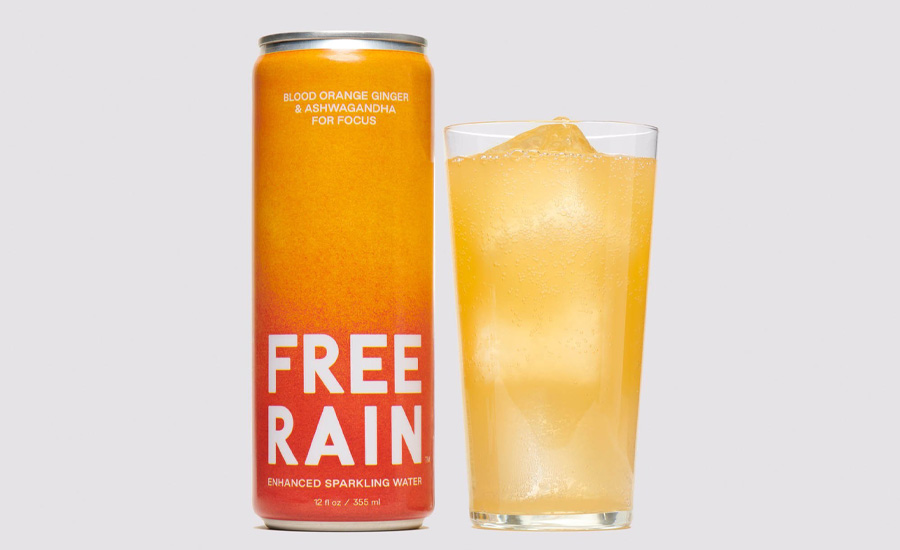
Image courtesy of Free Rain
Beverages branching out
Although flavor innovations can be seen across a wide variety of beverage categories, Virginia Dare’s Caputo points to coffee drinks and performance beverages as two key innovators.
“New product development in coffee drinks is being driven by products with indulgent and premium claims,” he says. “According to Innova, demand is rising for specialty coffees, ethnic and exotic flavors, and coffees that are organic or processed with innovative methods.”
For performance beverages, Caputo notes there are several flavors inspired by childhood (e.g., cereal milk, classic candy, sour lemonades); cocktail-inspired flavors (from Bellinis to mules to mudslides); and indulgent favorite flavors (e.g., grasshopper pie, s’mores, gooey cake and blueberry bramble crisp) all have increased mass-market appeal of functional applications such as post-workout shakes.
Flavorchem’s Shurhay notes that more adventurous flavors are appearing in RTD coffee, spirits and even sports nutrition applications as brands experiment with different flavor profiles to appeal to consumers’ appetite for new flavor experiences.
“Hard seltzer continues its meteoric rise as more innovative seltzer formats and flavors hit shelves, with hard seltzer lemonade, tea, and cocktail-inspired flavors [like] Old Fashioned and Citrus Gimlet are appearing in seltzer launches,” she says. “Alcohol-inspired flavors like whiskey and rum are seen in more RTD coffee products, as coffee is another category ripe with innovation.”
She adds that opportunities for adventurous flavors in the coffee space include innovations in plant-based and dairy-free creamers that use nostalgic flavors like maple, s’mores and gingerbread, and global flavors including horchata, dulce de leche and matcha.
Kerry’s Garcia-Perrin agrees, noting that in Kerry’s Taste Trends report, one of seven trends influencing the flavors market includes taste exploration.
“This year will see consumers craving the taste of travel and adventure, with the popularity of international cuisines increasing in response to heightened travel restrictions,” she says. “It is expected that the most popular tastes in 2021 will be Korean, Indian, Thai, Spanish and Greek.”
The adventure ahead
With increasing piqued interest toward functionality, natural attributes, familiar and indulgent flavors, and exotic and adventurous flavors lies potential for beverage innovation, experts note.
Synergy Flavor’s Kuder anticipates brands will look for flavor profiles that can establish connections across generations, such as the merging of traditional and unconventional flavor profiles and varying taste sensations.
“Millennials are known as adventurous consumers who prefer less-sweet offerings, whereas Gen-Z tends to be more reserved with their flavors, but also enjoy color and products that are a bit sweeter,” she says. “Brands will likely seek our flavor profiles that can offer the best of both worlds ― perhaps a colorful seltzer that contains a hint of juice for sweetness, with an added botanical top-note to provide a touch of flavor complexity to the finished product.”
In light of COVID-19, Virginia Dare’s Caputo reiterates that the immunity category could experience about 25 percent growth this year with consumer health trends driving natural flavor inspiration for the foreseeable future.
“Consumers associate natural flavors with improved health and wellness, and improved health and wellness is now at the top of everyone’s minds because of the pandemic,” he says. “It’s safe to say that natural flavors are here to stay.”
Looking for a reprint of this article?
From high-res PDFs to custom plaques, order your copy today!




